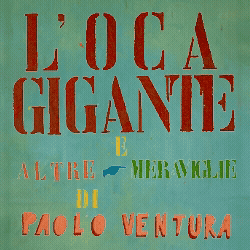
Report by Taylor Le Melle, curator and writer based in New York and London.
To talk about Frieze Art Fair, in its fourth year in New York, as overwhelming, chaotic, and brutally elitist is no longer interesting. We know. The big white tent is not a democratic place; one has to have the disposable income to attend, the wealth to be cordially invited, or the social/intellectual currency to be allowed in for free. Located on Randall’s Island, Frieze NY is even more of a pilgrimage than its London counterpart. Accessible only by boat or bridge, the pop-up castle sits protected from the bustling grid of the city. Despite this air of exclusivity, one might argue that the non-selling elements such as Frieze Projects bring an egalitarian, communal aspect to the fair. Looking is a form of ownership, too, right? I couldn’t help but think that the very notion of egalitarianism was being prodded and scrutinized this year.
In Pia Camil’s Frieze project, the artist distributed 400 wearable fabrics twice each day. Participants who lined up to receive the capes (or picnic blankets, as some recipients used them), were also given tote bags branded with a large, cobalt blue ‘W’, a nod to the name of the project, Wearing-watching (2015). The project was said to reference Hélio Oiticica’s Parangoles (1964-1979). To my knowledge, Oiticica’s Parangoles are read as subversions of the hyper-centralized authority of dictatorship in mid-20th century Brazil. Thus the sight of the Frieze VIP crowd, sporting these democratic paintings over their millionaire’s-best, seemed a contradictory, if not too-flat, reference to the late Brazilian artist. Nonetheless, Camil asserts (via her interview published in the fair catalogue) that it is in this contradiction where meaning is generated. It is true that the gesture was at once a playfully disruptive communal experience and also yet another spectacle of status: the have-tote-bags over the have-nots.
Is art inherently democratized when it comes off the wall? Another work that begged this question was Monika Sosnowska’s Untitled (2006) at Galerie Gisela Capitain. In addition to its formal recall of Felix Gonzales-Torres’ beaded curtains, the work invited, perhaps required, the viewer to touch it. In a setting in which only a small percentage of viewers can do more than just look, the touch-ability of the rubber curtain was a subtle subversion in a hierarchy of access.
Other booths recorded the viewer’s touch to similar ends. The blue carpet floor within Galerie Sultana’s installation of Walter Pfeiffer photographs somehow became a subversive gesture, as it recorded – without regard for the quality of the shoe or the color of the VIP pass in the pocket, the foot traffic of all the fair goers. The cobalt blue floor dirtied quickly, everyone’s tracks having collapsed and co-mingled into a single anonymous layer of filth.
Galleria Jacqueline Martins, winner of the 2015 Stand Prize, presented Brazilian artist Martha Araújo, who showed work that she produced during Brazil’s transition from dictatorship to democracy. Araújo re-staged her own audience-led performance, this one titled Para um Corpo Nas Suas Impossibilidades (For a Body in its Impossibilities) (1985). Visitors were invited to wear a jumpsuit and attempt an impossible climb up the interior of a concave carpeted curve that essentially looked like a section of a skatepark half-pipe. Perhaps because Araújo was almost a contemporary of Oiticica, her strategies for participation seemed more akin to his models of socialization and community participation and much less rooted in the necessity of spectacle that made Camil’s Frieze Project feel so contradictory.
The presentation of Araújo’s work felt additionally current amidst so many under-recognized female artists on show at the fair. Most of the booths in Spotlight, the section of the fair dedicated to solo presentations of overlooked artists, were women: Lynn Hershman Leeson at Waldburger Wouters and Gallery Paul Anglim, Shelagh Wakely at Richard Saltoun, and Howardena Pindell at Garth Greenan Gallery, for example. Similarly, Joan Jonas who has until the last decade been overlooked by institutions (and the market) was shown at multiple galleries including Galleria Raffaella Cortese who showed a beautifully textured documentation drawing from Jonas’ Reincarnation (2014) performance at Hangar Bicocca.
Some of the galleries in the main section of the fair also brought solo presentations, and these seemed almost like proposals for institutional retrospectives. Giuseppe Penone at Marian Goodman, Linder at Stuart Shave/Modern Art, and two focused presentations of Franz West and John McCracken at David Zwirner all looked like thoughtfully arranged mock-ups of a solo show, perhaps an incitation for museum curators’ imaginations.
Other highlights included Than Hussein Clark at Mathew Gallery, Turner Prize-nominated Nicole Wermers’ at Herald Street, and JTT’s presentation of Anna-Sophie Berger, whose work uses production methods of the fashion industry (for example, bolts of silk used to make printed scarves) to comment on mechanisms of distribution and value attribution. In the pop up vinyl fortress where the spectacle of exclusivity is matched only by the efforts to convince us that art is for everyone, I found all three aforementioned artists use of luxury goods as medium to be especially pertinent.













